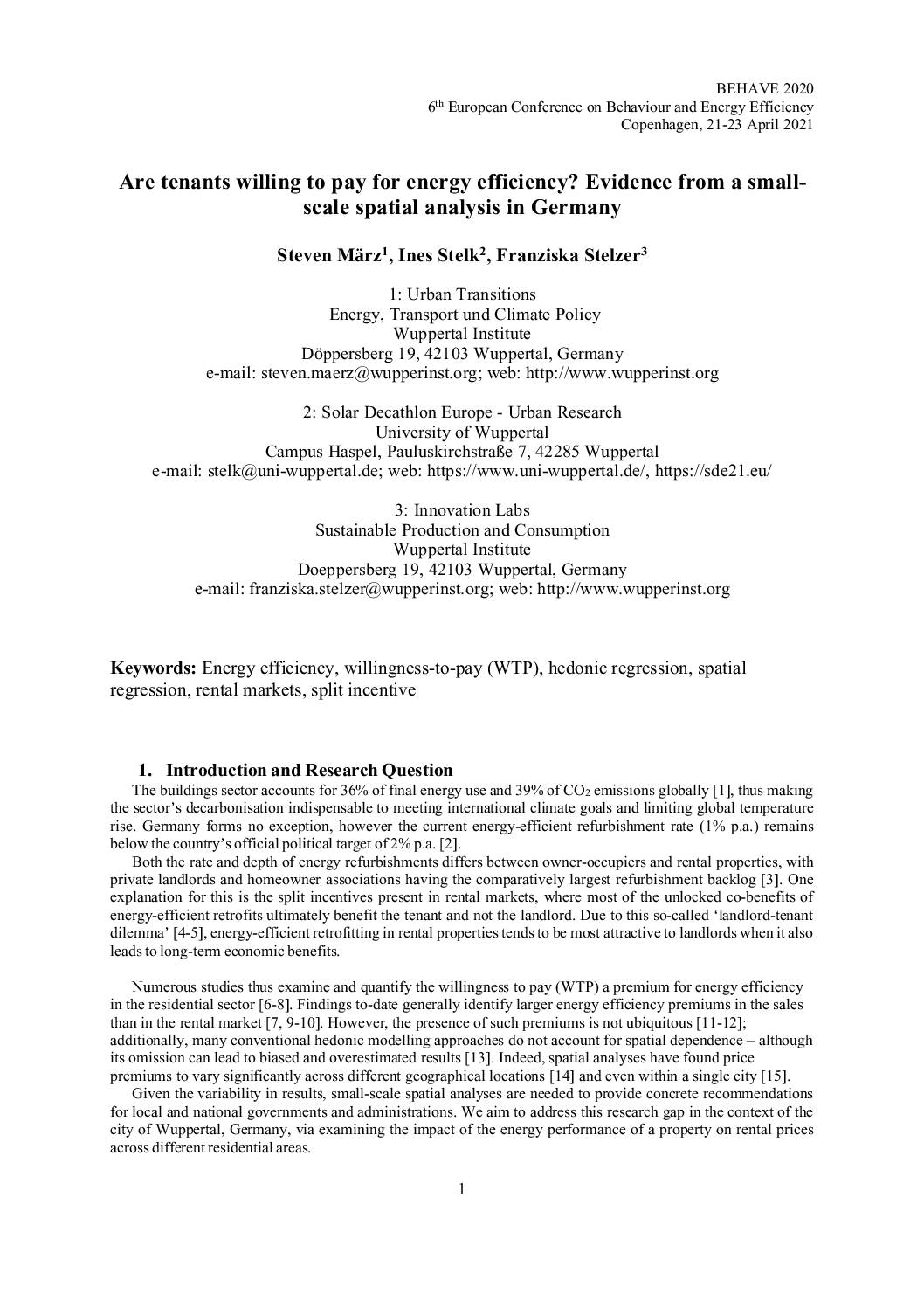The buildings sector accounts for 36% of final energy use and 39% of CO2 emissions globally, thus making the sector’s decarbonisation indispensable to meeting international climate goals and limiting global temperature rise. Germany forms no exception, however the current energy-efficient refurbishment rate (1% p.a.) remains below the country’s official political target of 2% p.a.
Both the rate and depth of energy refurbishments differs between owner-occupiers and rental properties, with private landlords and homeowner associations having the comparatively largest refurbishment backlog. One explanation for this is the split incentives present in rental markets, where most of the unlocked co-benefits of energy-efficient retrofits ultimately benefit the tenant and not the landlord. Due to this so-called ‘landlord-tenant dilemma’, energy-efficient retrofitting in rental properties tends to be most attractive to landlords when it also leads to long-term economic benefits. Numerous studies thus examine and quantify the willingness to pay (WTP) a premium for energy efficiency in the residential sector. Findings to-date generally identify larger energy efficiency premiums in the sales than in the rental market. However, the presence of such premiums is not ubiquitous; additionally, many conventional hedonic modelling approaches do not account for spatial dependence – although its omission can lead to biased and overestimated results. Indeed, spatial analyses have found price premiums to vary significantly across different geographical locations and even within a single city.
Given the variability in results, small-scale spatial analyses are needed to provide concrete recommendations for local and national governments and administrations. We aim to address this research gap in the context of the city of Wuppertal, Germany, via examining the impact of the energy performance of a property on rental prices across different residential areas.
Download sourceShare this

Sector: Buildings
Country / Region: Europe, Germany
Tags: carbon dioxide, cities, co-benefits, emissions, energy, incentives, national governments, non-carbon benefits, premiums, targetsIn 1 user collection: Session 1b: Hard-to-reach energy users in residential and non-residential sectors and financing
Knowledge Object: Publication / Report
Publishing year: 2020
Author: Steven März, Ines Stelk, Franziska Stelzer
Content:

